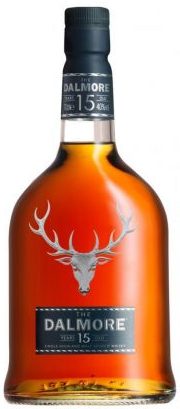Sweet fruit and Oloroso sherry notes, layered with honey and vanilla. Smooth and mellow with beautifully combined flavours ~ nutty sweetness, cinnamon spiciness and a delicately proportioned layer of sherry. Long and warming.
Delivery Charges
*Local Free Delivery: SL3 and SL4 postcode (Windsor/Datchet)
*Local Free Delivery: All SL (Except SL7), HP9, GU25, TW18, TW19 & TW20 postcodes. (Min. 6 bottles or 1 Hamper or 1 of our selected Wine cases purchased)
- England and Wales £12.00
- England and Wales Free Delivery (Over £200 purchased)
- Northern Ireland £30 (All BT postcodes)
- Scotland £15.00 (EH, FK, G, KA, KY, ML, DG and TD postcodes)
- Scottish Highlands and Islands £ 30.00 (All AB; DD; HS; IV; KW; KA27-28; PA; PH; TR21-25; ZE postcodes)
More Information
WhiskyAll the spirits mankind has distilled, refined and enhanced from nature's huge store of goodness, Scotch whisky is the noblest. It is a natural drink, a distillation of the riches with which Scotland is so abundantly endowed - of fields of golden barley and wheat; of clear waters tumbling down glens of granite and over moors of peat; and of the cool, pure air of Scotland.
The traditions of distilling and maturing Scotch whisky have evolved through the centuries, using crafts passed from generation to generation in a continual process of refinement. Whisky can only be called Scotch if it has been distilled and matured in Scotland.
Until 1831 and the advent of the patent still, all the whisky produced in Scotland was of the malt variety. Now, there are two kinds of whisky: malt whisky, used essentially in the creation of blended whiskies, or bottled in small proportions as a single malt; and grain whisky, which is combined with malt whisky to create the famous blends.
Both varieties are produced differently - but both are produced in distilleries located in the most picturesque of settings, close to the natural ingredients on which their unique flavour depends.
Distillation
Scotch malt whisky is made from malted barley, water and yeast. The first stage of production is the malting of the barley. The barley is first steeped in tanks of water for 2 to 3 days before being spread out on the floors of the malting house to germinate. To arrest germination, the malted barley is dried in a kiln, identifiable by the distinct pagoda-shaped chimneys, characteristic of every distillery.
Peat, a natural fuel cut from the moors of Scotland, is used to fire kilns in the drying process, along with more modern fuels. Smoke from the fire drifts gently upwards through a wire mesh floor to dry out the barley, and the "peat reek" imparts a distinctive aroma which contributes to the character of the final spirit. When dried, the malt is as crisp as toast.
The malted barley is then ground to a rough-hewn grist and mixed with hot water in a vessel known as a mash tun. This process converts the starch in the barley into a sugary liquid known as wort. The wort is transferred to a fermenting vat, or washback, where yeast is added and the fermentation process converts the sugary wort into crude alcohol, similar in aroma and taste to sour beer. This is known as wash.
The crucial process involving the distinctive swan-necked copper pot stills, where distillation separates the alcohol from the wash. Malt whisky is distilled twice, the first distillation taking place in a larger wash still, and the second in a slightly smaller low-wines or spirit still.The still-man raises the temperature within the wash still and gradually, the fermented liquid is heated and the alcohol in the wash vaporises. The vapours rise up the swan neck and pass over the head of the still, before being guided through condensers where they revert to liquid.
This liquid is collected in a receiver before being passed into the second low-wines or spirit still where the process is repeated. The still-man exercises much more control in the second distillation as only the heart, or "middle cut", of the spirit flow will be collected as new spirit. This takes place as the spirit flows through a spirit safe, where the still-man can observe, assess and measure it.
The first runnings from the still (foreshots) and tails (feints) are returned for re-distillation with the next batch of low wines. The "middle cut" is collected by the stillman, only when he is personally satisfied that it has reached a high enough standard.
Scotch grain whisky is made from wheat or maize which is first cooked under pressure in order that the cereal starches can be broken down into fermentable sugars. The cereals can then be combined with a proportion of malted barley in the mash tun and mixed with boiling water to produce the sugary liquid known as wort.
The resultant wort is fermented to produce the wash which then passes into the massive, continuously operating, two-columned Coffey or patent still. The skills of the still-man, required to judge the moment at which the Scotch malt and the Scotch grain spirit is ready to be collected, are crucial to the art of distilling.
Once the quality has been approved, the malt and grain new make spirit is ready to be filled into a variety of specially selected oak casks for the long period of maturation in cool, dark warehouses. Now time begins to work its miracle.
The quality of the casks is carefully monitored because the new spirit is to gain character and colour from the wood in which it rests. Some casks will previously have been used to mature oloroso, fino or amontillado sherries; some will have contained bourbon and some will be oak. The type of cask used for maturation will have been determined by the master blender who is seeking a particular character and continuity of the whisky.
Only after a minimum of three years maturation can the new make spirit be legally defined as Scotch whisky. In practice, most Scotch whisky matures for much longer - from five to fifteen, twenty, or twenty-five years and sometimes longer. It is this lingering period during which Scotland's cool, clean air steals through the porous oak of the casks and charms their contents, contributing further to the smooth and golden character of each distillery's unique creation.A proportion of the whisky in each cask evaporates annually and is lost to the heavens. This is known as the "angels share".
The greatest proportion of Scotch whisky produced in Scotland is consumed in blended form. The highly complex task of creating a marriage of single malt and single grain whiskies to make a blended whisky, is the responsibility of the master blender.
Blending
The art of blending is to produce a blended Scotch whisky, which is different from others, a little more subtle, a little more complex than the individual whiskies which have gone into the blend.
A blend is a careful and judicious combination of anything from fifteen to fifty single whiskies of varying ages, compiled to a highly secret formula. The master blender will have spent long years mastering and perfecting the art of "nosing".
For this most important of tasks, his equipment is simple - a tulip shaped glass, which will best capture the aroma of the whisky, and fresh water, which he adds to the whisky for nosing.His acute sense of smell enables him to determine which whiskies will combine successfully with others, and those which will fight. Keeping the incompatible apart is all part of the blender's skill.Once the blender has selected his single whiskies, he will nose them as new spirit fresh from the stills, to ensure they are up the required standard. He will continue to nose them throughout maturation, until he is content that they should be taken forward.
Eventually, all of the selected whiskies are brought together, pumped into vats, and then back into casks where they will rest for a further period of up to six to eight months. This is known as the "marriage" - the period during which each component whisky harmonises with the others.
When a bottle of Scotch whisky bears an age statement on the label, that is the age of the youngest whisky in the blend.
Upon completion of the marriage period, the whisky is ready for bottling. The blender will nose it again, once it is reduced to the alcoholic strength required for bottling, to ensure that the quality of the blend is consistent with all the others he has produced over the years.
Once it is finally bottled, Scotch whisky has reached the end of its long journey down the years in perfect condition, ready to be dispatched to whisky lovers around the world.











